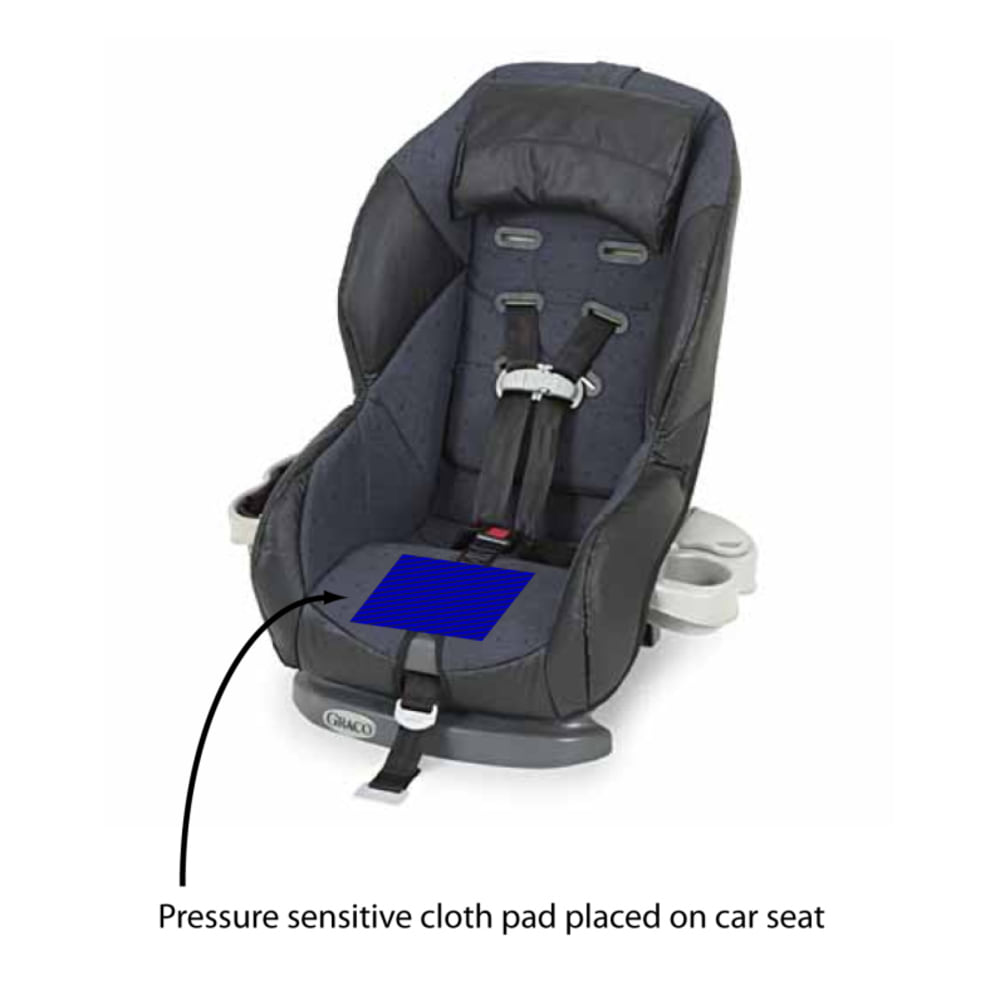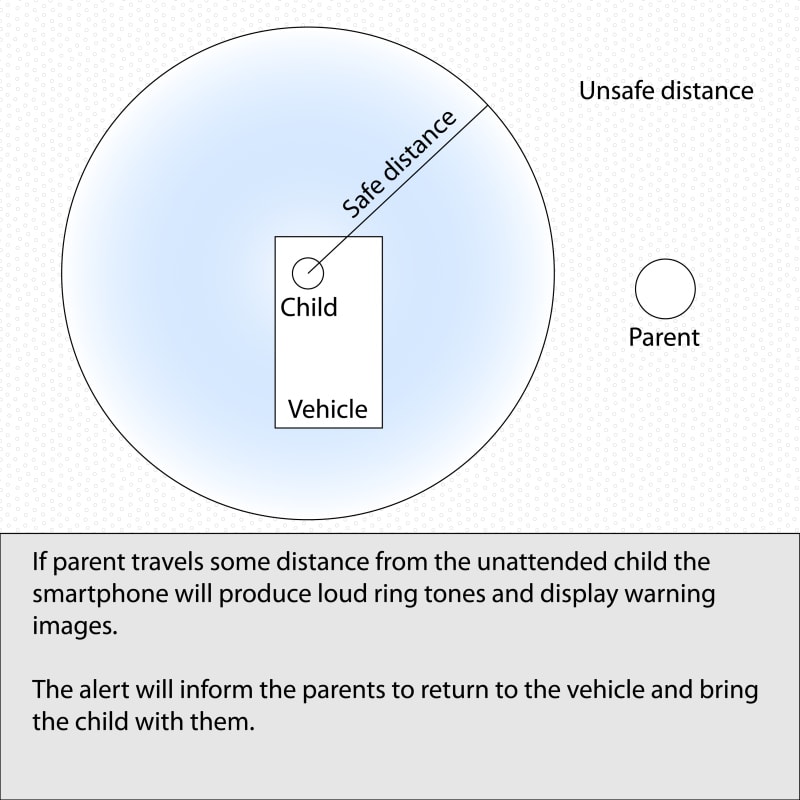
Forgetting an infant in a vehicle is a dangerous situation that has led to numerous infant deaths. A Pulitzer Prize winning article [Gene Weingarten, 2009 Washington Post] captures the heart of this devastating situation. Studies have shown that all parents have risk of forgetting a child regardless of education, occupation, or economic status. Some solutions exist on the market to aid parents, but they can be prohibitively expensive, require modification to the vehicle, or require the parent to bring an additional device on their person. No convenient, affordable device exists that alerts parents if their child is accidentally left in their vehicle.
We propose a product that attached to the bottom of a car seat that senses when a baby is present. When pressure is detected the device sends a signal via Bluetooth to a smart phone. If the distance between the phone and the device becomes greater than 15 feet, the app alerts the user with loud ring tones and images.
Our device does not require the parents carry a specially designed piece of hardware, only a standard smart phone, distinguishing us from competitors. Many people have smart phones that already contain sensitive GPS units. According to our market research, in 2011 one third of Americans owned smartphones, with projections showing that 65% of Americans will own smartphones in 2015. Using our baby sensing device and app with a smartphone commonly owned by the American populace, we can drastically improve the safety of our children.
The system is composed of two elements; a pressure sensing device placed on a car seat, and a smart phone app. The pressure sensing device activates a GPS chip and Bluetooth transmitter when a change in pressure is detected. This alerts the smart phone and displays an icon that shows a child in a car seat. The distance of the parent to the child’s car seat is calculated. When this distance exceeds some threshold the app takes control of the users phone and creates a loud, visually distracting image that alerts the parent that the child is left in the vehicle. After removing the child from the car seat the pressure sensing device sends a signal to the phone, and the app displays an empty car seat. If the parent does not respond to the initial alert after some time emergency contacts are automatically called (i.e. work or spouse phones). If emergency contacts don’t pick up in a reasonable amount of time, the app can be preconfigured by the user to alert emergency services with the location of the vehicle.
Pressure sensing and Bluetooth chips and other components are easily acquired (Digikey, Bluetooth Chip $2, Pressure Sensing
-
Awards
-
 2012 Top 100 Entries
2012 Top 100 Entries
Like this entry?
-
About the Entrant
- Name:Gabriel Birch
- Type of entry:teamTeam members:Charles LaCasse, University of Arizona College of Optical Sciences
- Patent status:none








